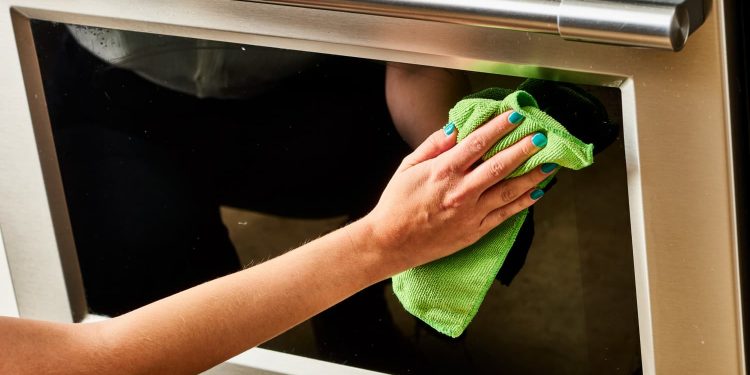We independently select these products—if you buy from one of our links, we may earn a commission.
I don’t know about you, but my oven gets a decently serious workout pretty much every day. Between roasting chicken, baking cookies, and braising meat, I’m almost constantly using it. Not to mention, I don’t own a toaster, so I also use my oven most mornings to make toast, which results in a lot of crumbs. On top of that, my oven is ancient — I honestly think it lived through the era of leg warmers and acid wash jeans. All this to say: At this point, my oven is in need of a good clean.
I’ve tried many different methods of cleaning my oven to varying degrees of success. But I’m always in search of better, smarter ways to clean, so I decided to consult professional chefs on the matter. After all, nobody’s oven works harder than theirs! Here are five effective ways pro chefs clean their dirty ovens.
1. Use a heavy-duty oven cleaner.
Fans of all-natural cleaning fixes, avert your eyes: Heavy-duty chemical cleaners really do work. “It’s the easiest way to get a squeaky-clean oven,” says Kierin Baldwin, chef-instructor of pastry and baking arts at Institute of Culinary Education. She relies on Easy Off and the back side of a scrubby sponge. Why does the hard stuff work so well? Baldwin explains, “The active ingredient in oven cleaner is sodium hydroxide, also known as lye, and it is the most effective thing to get the baked-on grease off the inside of your oven.” It’s also a skin irritant and can create fumes, so definitely wear gloves and ventilate the room.
For the best results, Baldwin recommends spraying the entire inside of the oven and closing the door for at least an hour, then scrubbing away. You’ll also want to use a clean, damp sponge once you’re done to wipe up any chemical residue.
2. Scrub with Dawn dish soap.
At his Vermont restaurant, Hen of the Wood, chef de cuisine Jordan Ware uses a commercial-grade oven cleaner. But he and his wife keep things simple at home. “We use Dawn dish soap for both the dishes and the oven.” He notes that a classic Scotch-Brite cleaning pad works great, but that he avoids steel wool, as it can scratch up surfaces. Does the type of dish soap really matter? According to Ware, yes. “There are plenty of great options in the cleaning world, but for heavy-duty jobs, a serious degreaser like Dawn is the way to go.”
3. Make a baking soda and vinegar paste.
Molly Siegler, the senior program manager for culinary development at Whole Foods Market, sees a lot of crusty ovens while on the job. Her technique for cleaning them requires two household ingredients and a little patience. “For tough stains, I like to make a vinegar and baking soda paste, and let it sit for a couple of hours.” Baking soda is slightly abrasive and has extra grit to tackle stains and stuck-on debris, while vinegar’s acidic nature can dissolve mineral deposit, dirt, and grease. Siegler uses an abrasive nonmetal scrubby to finish off the job. After that, she wipes it clean — and, of course, admires her work!
Related: What Really Happens When You Mix Baking Soda with Vinegar?
4. Crank up the oven to 500˚F.
Eamon Lee, the executive chef at Syracuse University, has an easy, gentle hack: “I noticed the more sourdough bread baking at high temperatures I do, the less grease and carbon build-up I get. Simply firing the oven at 500 seems to serve as a self-cleaning process.” The key here is to wait until the oven has cooled to a moderate temperature, then pull on some gloves, and wipe away loosened residue and grease with a sturdy sponge. When the oven is cranked up, you can also try adding a bowl of water in an oven-proof dish. This will help to add a little steam to the cleaning process once the oven has cooled.
5. Spot clean with a Magic Eraser.
What’s your go-to oven-cleaning method? Tell us in the comments below.
Source by www.thekitchn.com

![[Working] 6 Ways to Fix 404 Not Found Error in Google Chrome](https://regionalposts.com/wp-content/uploads/2022/02/Working-6-Ways-to-Fix-404-Not-Found-Error-in-75x75.webp)